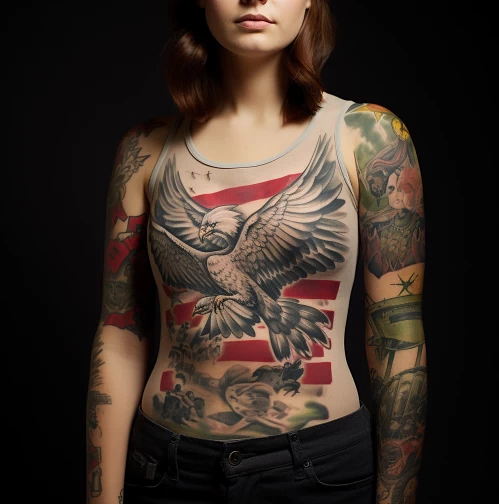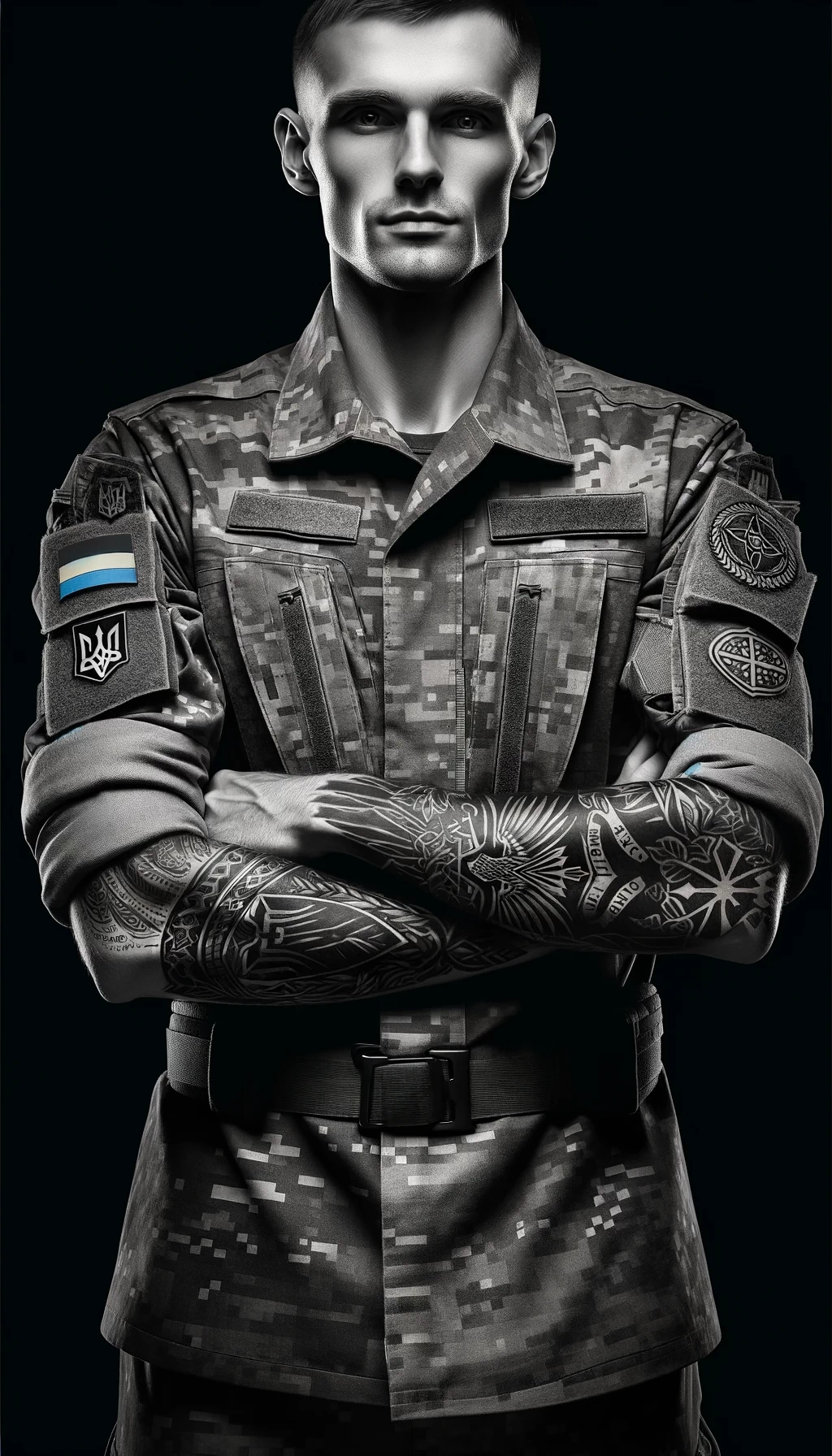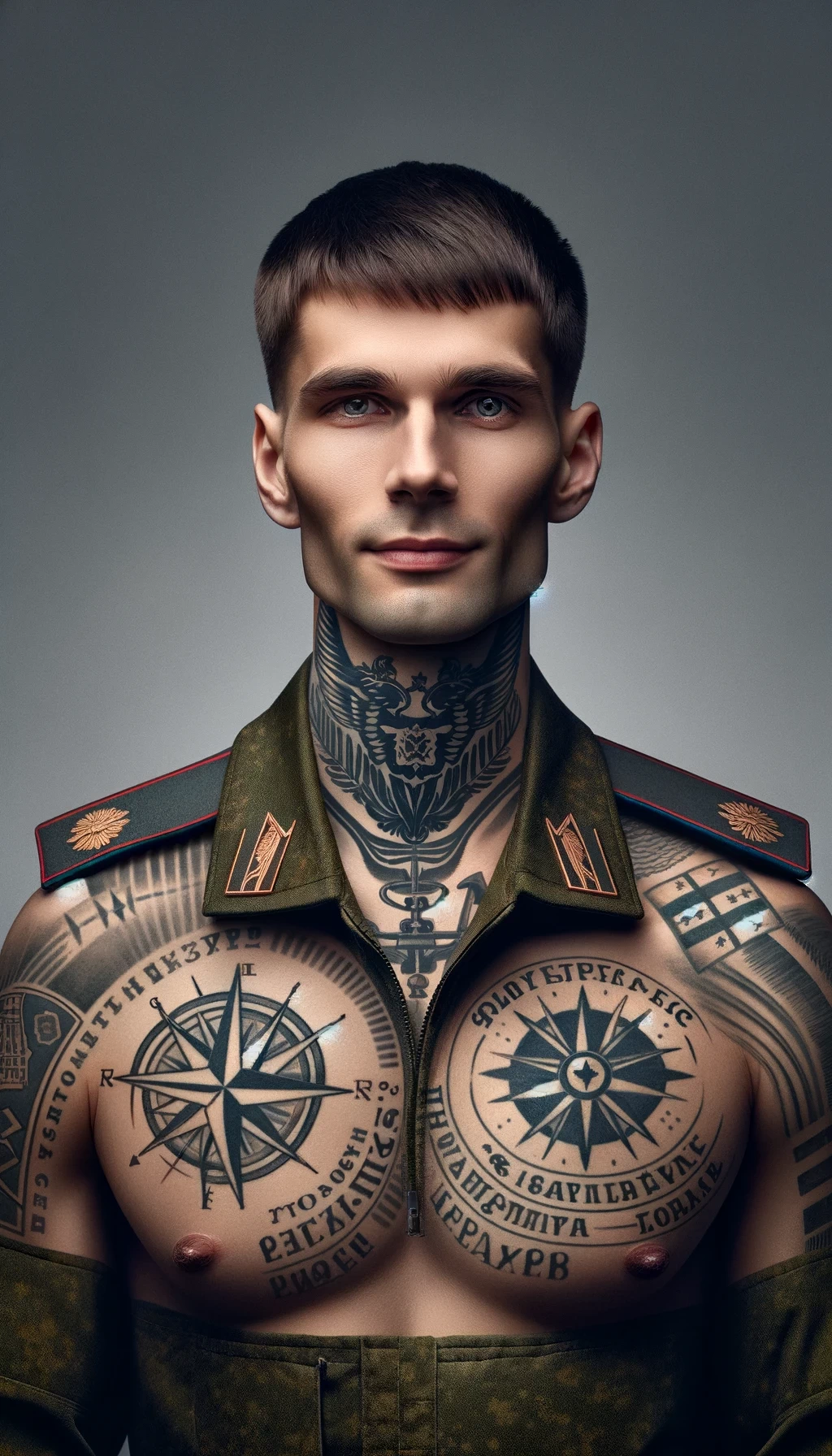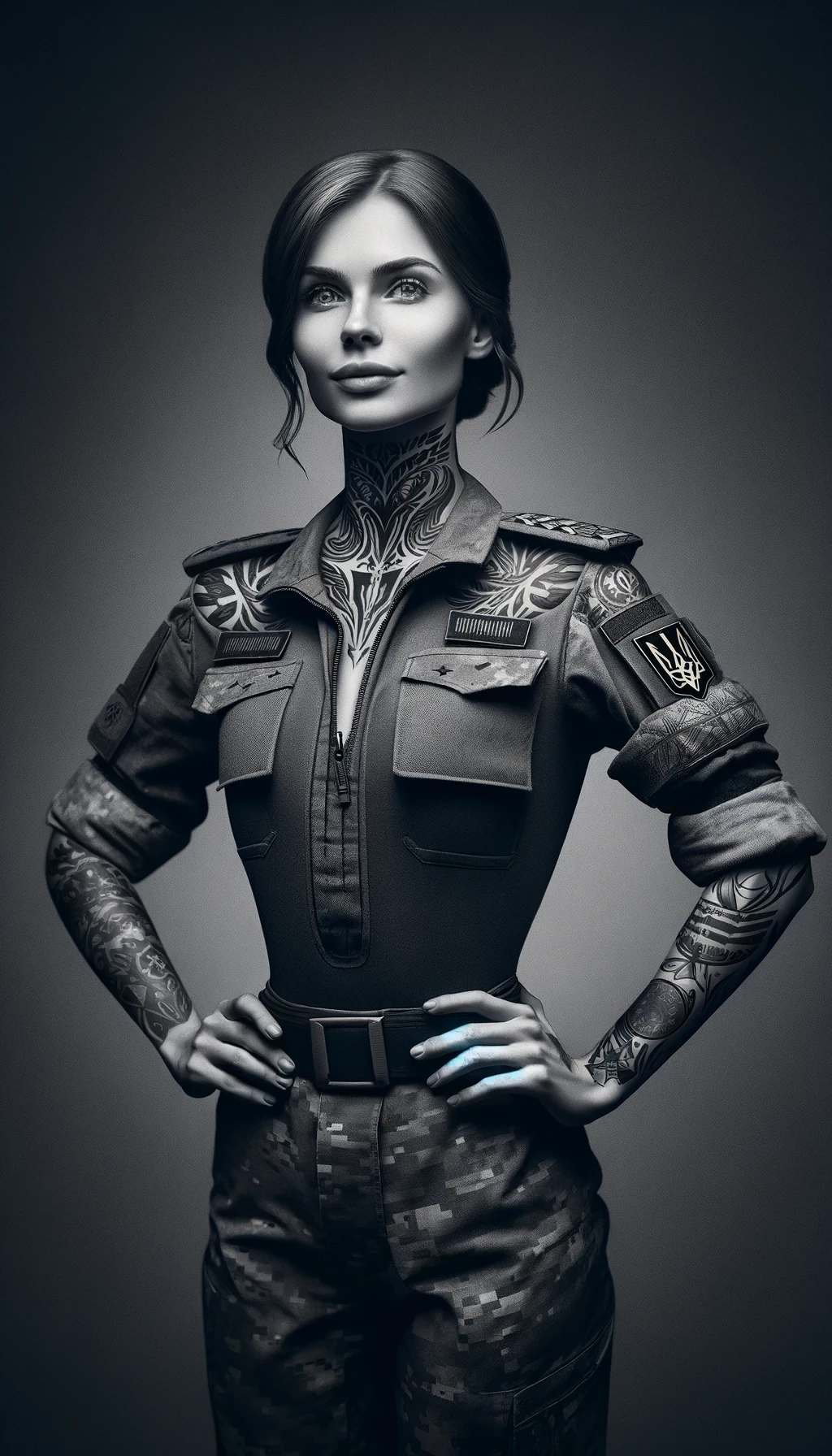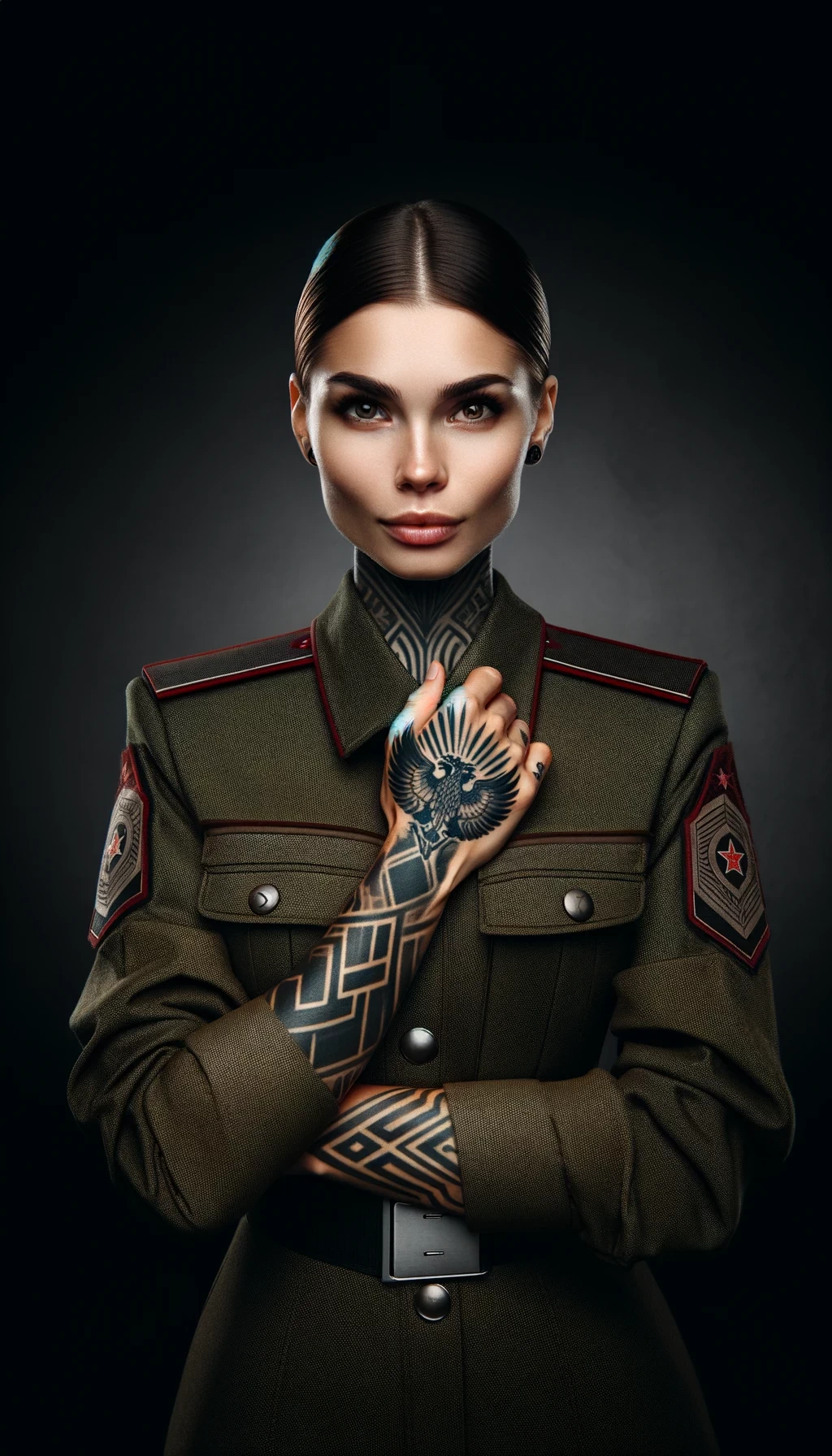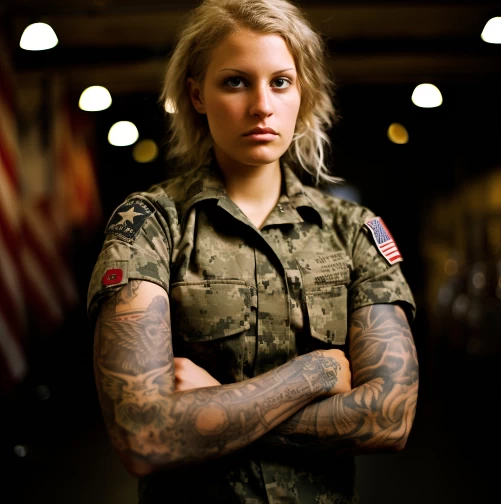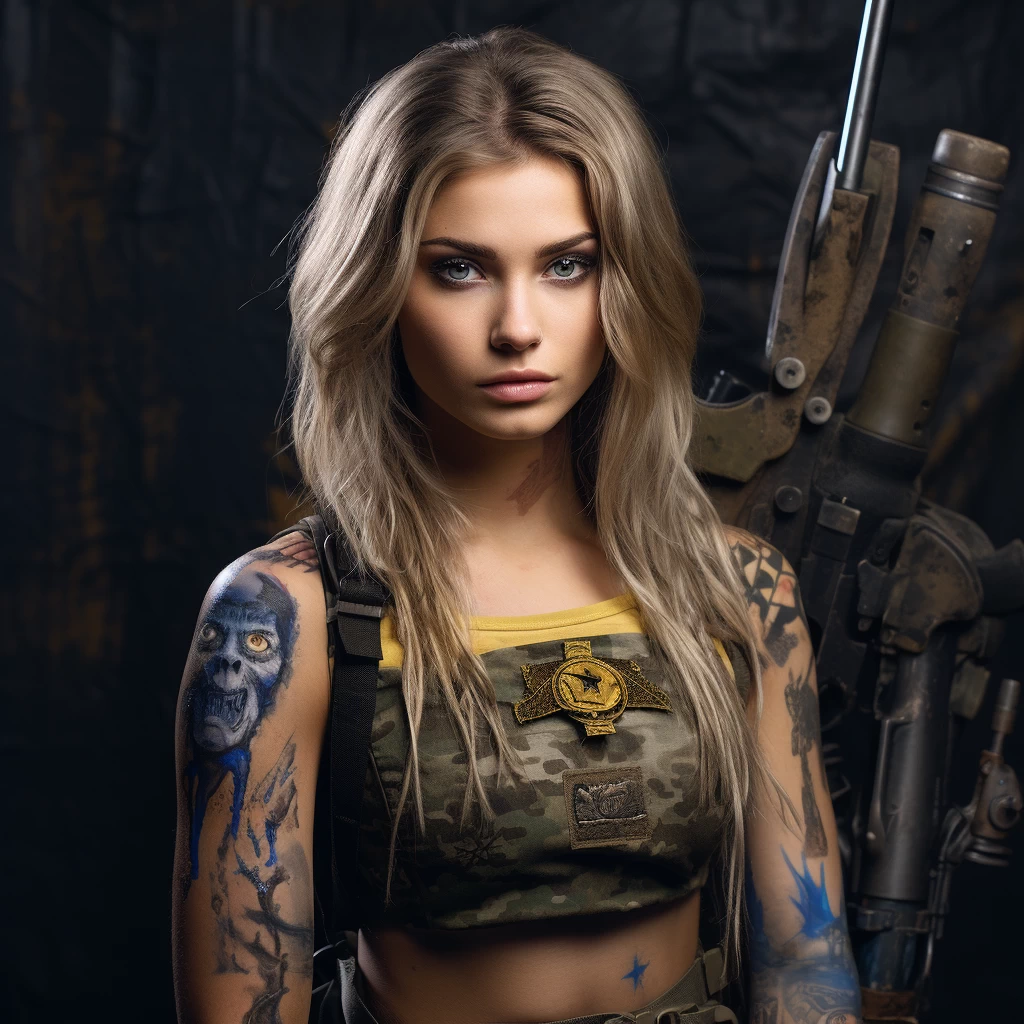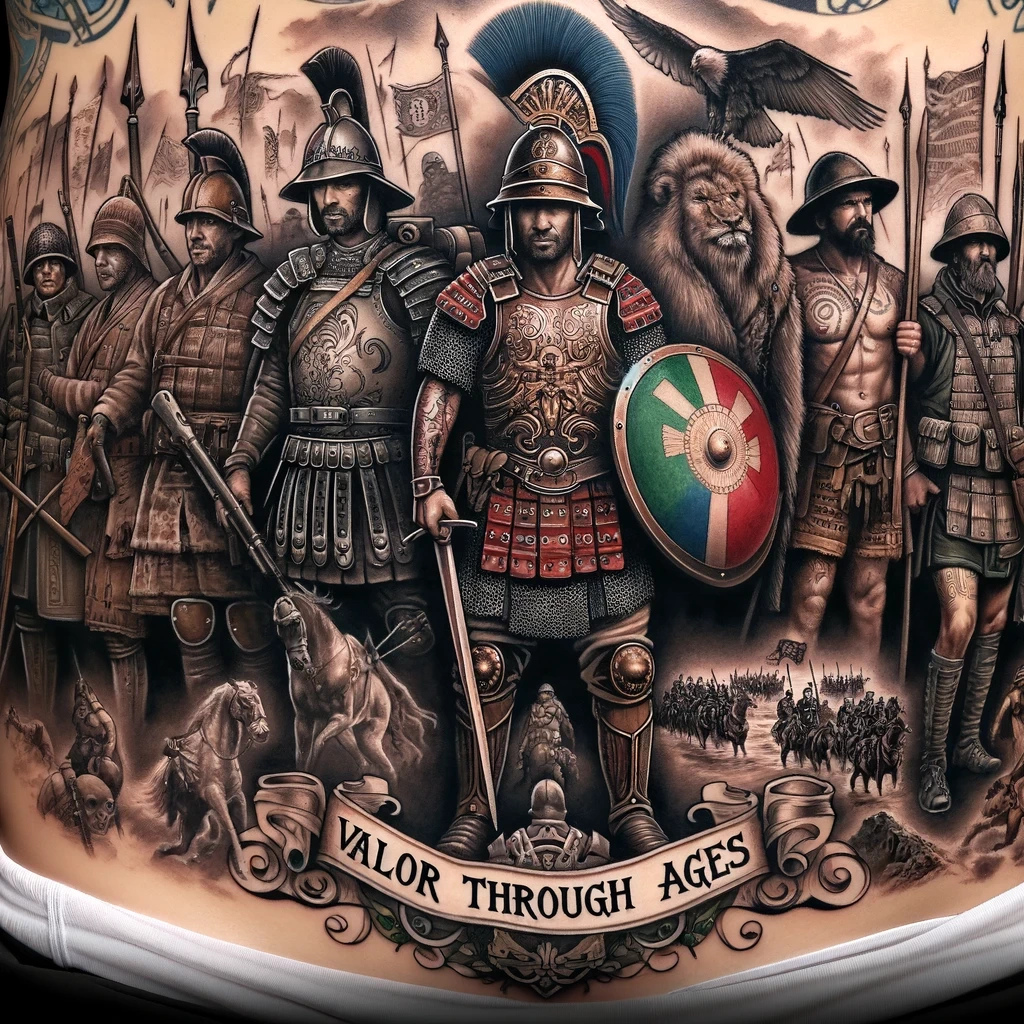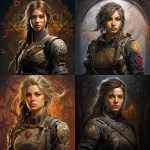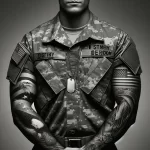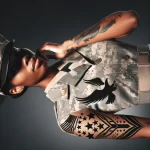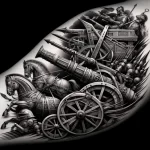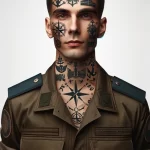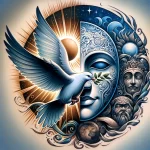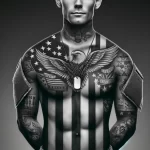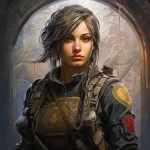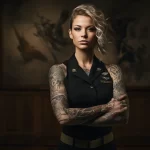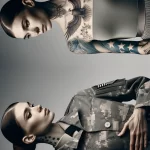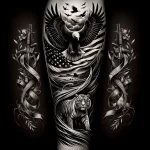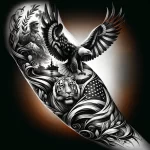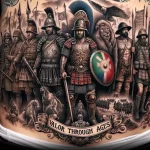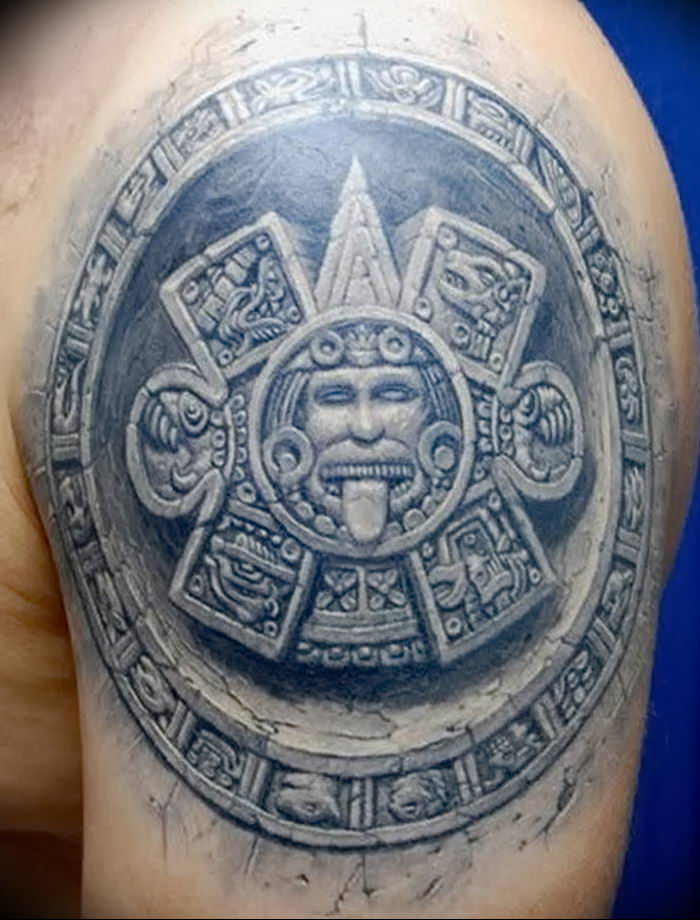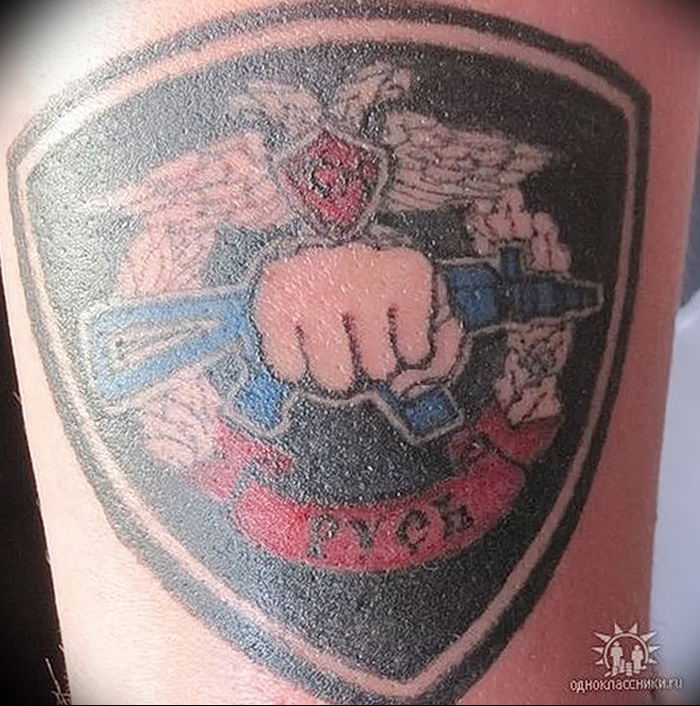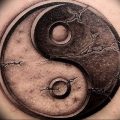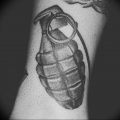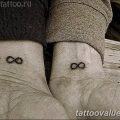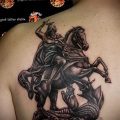Tattoos have always been an integral part of military culture. They not only adorn the skin of servicemen but also carry profound symbolic meanings, reflecting their dedication to service and historical heritage. In this article, we will delve into the world of military tattoos, examining their history, significance, and the diversity of symbols. Let’s discover the secrets behind these unique forms of art on the skin of military personnel.
Everything interesting about military tattoos in different countries
Tattoos are an art that transcends various cultures and eras, with a rich history and myriad meanings. In this article, we offer an overview of the history of tattoos in different cultures, revealing their multifaceted nature and significance in the modern world.
The history of tattoos spans millennia and holds a special place in the cultural traditions of different nations. From ancient tribes to contemporary societies, tattoos express history, beliefs, status, and self-expression. Various cultures have developed their unique styles and symbolism, making tattoos a powerful means of self-identification.
One interesting area where tattoos have found their place is in military service. In this article, we will explore how tattoos are linked to military culture and examine the percentage of military personnel with tattoos in various countries and branches of the military.
Historical Context
The history of tattoos in the world’s armies dates back to ancient times and is an integral part of the military history of many nations. Since ancient times, warriors adorned their bodies with tattoos not only as decoration but also as symbols of bravery, courage, and sometimes belonging to a specific tribe or warrior clan.
For example, for Maori warriors, the indigenous people of New Zealand, traditional tattoos known as “ta moko” served not only a ritual and social function but also bore witness to personal achievements and status in society. The intricate patterns adorning the faces and bodies of the Maori told the story of a person’s life without words.
In Japan, during the era of the samurai, tattoos also held special significance. They could symbolize protection, luck in battle, and even serve as mystical barriers against evil. Although attitudes toward tattoos in Japanese society have changed over time, their historical significance in military culture remains an important part of cultural heritage.
In the modern era, especially during the First and Second World Wars, tattoos became even more common among soldiers and sailors. It was a way to express their identity, patriotism, and to keep memories of home and loved ones alive. Many military personnel got tattoos with the names of their loved ones, symbols of faith, and homeland to serve as reminders of what they were fighting for and protecting.
During the Vietnam War, tattoos took on new meaning. They began to reflect not only soldiers’ personal beliefs but also complex emotions related to the conflict, ranging from disappointment and protest to brotherhood and the memory of fallen comrades.
With each decade, the significance of tattoos in the military environment continues to evolve, reflecting changes in societal attitudes, military policy, and cultural trends. In the modern world, tattoos remain an essential part of the lives of many military personnel, serving as a bridge between the historical past and the contemporary realities of military service.
Symbolism of Tattoos in the Army
Tattoos in the military often serve as a non-verbal code that carries unique values and traditions rooted in the history and culture of military communities. Common symbols, such as anchors and flags, serve as vivid examples. The anchor, traditional for sailors, symbolizes stability and dedication to the maritime life, as well as hope and support in an unstable world. Flags are often used to demonstrate patriotism and pride in one’s country.
Memorial tattoos play a special role; they become a personal memorial dedicated to fallen comrades. Often, such tattoos include dates, names, or even portraits, and each one tells a unique story of loss and honor. These images remind us of the price that military personnel pay for peace in their country and the eternal bond that forms among soldiers in the course of their service and battles.
Moreover, tattoos in the military often become a symbol of camaraderie and unity. Identical or interconnected tattoos among members of the same unit or service personnel who have gone through the same trials reflect an unbreakable bond and mutual understanding that is difficult to convey in words. These symbols can serve as a constant reminder of shared experiences, common values, and strong bonds that last a lifetime.
Thus, each tattoo on a serviceman’s body is not just an image; it is a chapter of their personal story etched into their skin. Each one carries a deep meaning and is connected to their service, faith, and brotherhood.
Modern Trends
The modern world is becoming increasingly receptive to various forms of self-expression, and this observation does not bypass even such conservative institutions as the armed forces of different countries. Recently, there has been an increase in the number of military personnel who adorn their bodies with tattoos, choosing this way to express their individuality, signify their affiliation with a particular unit, or immortalize the memory of significant events and people.
The change in public opinion towards tattoos has also found its reflection in the rules of military institutions. Different countries and branches of the military are revising their directives, becoming more lenient towards soldiers with tattoos. In some places, it is allowed to have tattoos on visible parts of the body, while in other armies, they require them to be concealed while in uniform. This change reflects the military’s desire for a deeper understanding of cultural and individual differences within their ranks.
One cannot overlook the influence of pop culture on militaristic tattoos. Film, music, and literature often glorify the images of soldiers, many of whom are adorned with tattoos. This, in turn, motivates some soldiers to follow such examples. Cultural depictions of tattooed soldiers are becoming part of mainstream culture, undoubtedly contributing to the growing popularity of tattoos among military personnel.
This trend of blurring the lines between the cultural practices of the military and the civilian population is an interesting phenomenon, reflecting the dynamic development and adaptation of traditional views on self-expression through the art of tattooing.
Types of Tattoos Most Popular Among Military Personnel
In the military environment, tattoos carry a special meaning, as they often reflect personal experiences, collective identity, and professional dedication to service. Let’s take a closer look at various types of tattoos that are most popular among military personnel.
Patriotic Tattoos: These images typically serve as expressions of pride in one’s country and respect for the history of one’s people. Flags, national symbols, images of significant places or historical events related to the country can be seen in patriotic tattoos. In the United States, for example, tattoos with the American flag or symbols of the armed forces are common, while in Russia, tattoos with the St. George’s Ribbon or depictions of fortresses and monuments are popular.
Symbolic Tattoos: Symbolism in military tattoos often reflects the personal qualities of service members, their inner strength, and professional ambitions. These can be images related to unit mottos, mascots symbolizing strength, courage, vigilance, and more. Examples include images of swords, shields, eagles, or even mythical creatures like dragons.
Religious Tattoos: Religion often plays a significant role in the lives of military personnel, and tattoos can reflect their faith and spirituality. Crosses, iconographic images of saints, quotes from sacred texts, or even entire scenes from religious stories are common among military tattoos. In India, for instance, tattoos depicting deities from Hindu epics are popular, while in Christian-majority countries, images of the cross or warrior saints are common.
Unit Affiliation Tattoos: These tattoos indicate affiliation with a specific military unit or corps and often feature recognizable symbols or mottos of these groups. For example, Marines may choose anchor or ship-related imagery, pilots may opt for wings and aircraft designs, and paratroopers may have parachutes and associated symbols.
Commemorative Tattoos: These tattoos serve as reminders of important events, battles, or fallen comrades. Dates, operation names, portraits, or names of departed friends can be incorporated into commemorative tattoos, serving as everlasting reminders of military service and comradeship.
Quote Tattoos: Many military personnel choose to tattoo inspirational or motivational quotes on their bodies, reflecting their life philosophies or personal values. These quotes can be expressions from famous military figures, philosophical aphorisms, or excerpts from poems and songs that hold personal significance.
The influence of cultural and national characteristics on the choice of tattoos among military personnel is significant, and these are just general trends. Each tattoo tells a unique story, reflecting not only the external but also the internal battles of its owner.
The Most Popular Tattoo Designs in Different Armies of the World
The topic of tattoos in the world’s armies is a unique combination of history, culture, and symbolism inherent to each country and its armed forces. Often, these images reflect not only the personal beliefs and experiences of servicemen but also cultural traditions, patriotism, and military achievements. Below is an overview of some of the most common tattoos in various armies around the world:
United States:
- “Semper Fidelis” (Always Faithful) symbolism: This motto of the Marine Corps is often depicted in tattoos, emphasizing loyalty and allegiance to the corps.
- “Eagle, Globe, and Anchor” tattoos: The symbol of the United States Marine Corps, depicting an eagle, a globe, and an anchor, symbolizes readiness to serve on land, in the air, and at sea.
- The U.S. flag: A frequently seen motif expressing patriotism and pride in the country.
United Kingdom:
- SAS (Special Air Service) symbols: These include the winged sword and the motto “Who Dares Wins.”
- Tattoos with red poppies: A symbol of remembrance and respect for those who died in wartime.
Russia:
- Tattoos with the St. George ribbon: Symbolizing victory and military valor.
- Images of saints: For example, Saint George slaying the dragon, as a symbol of protection and bravery.
Japan:
- Traditional Japanese tattoos (irezumi): Complex scenes and figures such as koi fish, dragons, and cherry blossoms reflect local military traditions and history.
New Zealand and Australia:
- Maori and Aboriginal tattoos: Patterns reflecting indigenous culture and heritage.
Israel:
- Star of David images: Often used to express identity and unity.
India:
- Tiger tattoos: A symbol of power and strength, as well as a reference to India’s national animal.
These tattoos can be done in various styles and techniques, from traditional to more modern. They often have a deeply personal significance but also reflect shared values and the history of the military unit or country as a whole. It’s important to note that in some countries and military units, strict rules are in place that restrict the visibility and content of tattoos, which affects their prevalence and design.
Tattoos and Identity in the Military
In the context of military units, tattoos often go beyond mere body decoration, becoming a profound mechanism of self-expression. For many soldiers, a tattoo is not only art but also a way to tell their story, highlight personal achievements, experiences, or significant milestones in life. In the military environment, where strict norms and rules apply, tattoos become one of the few available means of individualization. Through tattoos, servicemen can express their affiliation with specific troops, units, or even cultural groups, enhancing the sense of unity and camaraderie among them.
The choice of specific tattoos often correlates with the status and role of the serviceman in the army. For instance, officers may opt for more subdued and symbolic images, emphasizing their responsibility and maturity, while lower-ranking soldiers may prefer more conspicuous and aggressive tattoos that can serve as a kind of “medal” for bravery or participation in combat operations. Thus, military hierarchy and role can influence the nature and complexity of the chosen tattoos, making them a significant element of military identity.
After completing their service, tattoos often play an important role in the adaptation process to civilian life. They become not only a reminder of the journey but also assist in psychological adaptation, serving as a bridge between the military past and civilian present. Tattoos can help maintain a sense of personal uniqueness and self-identification, which is critically important when former servicemen are seeking their place in society once again. Additionally, tattoos can serve as a conversation starter with others, creating an opportunity for sharing experiences and emotional support.
This phenomenon demonstrates that tattoos in the context of military life should not be viewed solely as an external feature. They are closely tied to the personal identity of servicemen, reflecting their inner world, experiences, and life history. Over time, tattoos become an integral part of one’s personality, emphasizing the connection between the past and the future, between the military and civilian life.
Issues and Criticism of Tattoos in the Military
The question of tattoos at the intersection of military and civilian life is fraught with complexities and contradictions, sparking lively debates both within military structures and in the public sphere. On one hand, in the eyes of many citizens, military personnel’s tattoos can be perceived as symbols of bravery, dedication to the cause, and brotherhood. On the other hand, despite the growing popularity and social acceptance of tattoos, their presence can still be a subject of dispute and negative perception, especially in more conservative or traditional circles.
In the military environment, tattoos may clash with official norms and standards, leading to conflicts. Many military regulations include clear provisions regarding the visibility and content of tattoos, which can be imposed on the personnel. These restrictions can vary from prohibiting certain sizes, locations, and contents of tattoos to their complete prohibition on visible parts of the body. These measures are justified by the need to maintain discipline, professionalism, and uniformity in the appearance of soldiers. However, this can create a dilemma for servicemen for whom tattoos are an important part of their personal identity and self-expression.
Examples of discrimination based on the presence of tattoos are not limited to military units. Stories of people with tattoos facing biased treatment in job interviews, professional advancement, or social interactions are not uncommon. In extreme cases, this can range from subtle discrimination to open forms of unacceptable behavior. Despite society becoming more tolerant of diverse forms of self-expression, tattoos can still be a source of negative stereotypes and judgments.
These contradictions and complexities reflect deeply ingrained cultural and social norms that are gradually evolving. They raise questions of tolerance, inclusivity, and personal freedom, demanding a balance between respecting individuality and upholding commonly accepted standards from both the military and civilian institutions.
In Conclusion
Looking to the future, the attitude towards tattoos in the military sphere may undergo significant changes based on the gradual transformation of public consciousness and the softening of conservative views. With the increasing popularity of tattoos and their growing acceptance in society, military regulations may become more lenient towards this form of self-expression, recognizing its importance to the personal identity and cultural identity of servicemen. These changes may also be reflected in hiring policies, career advancement, and overall social integration of veterans.
The significance of tattoos for military culture and the identity of servicemen is undeniable. They serve not only as a form of art or decoration but as a living history, symbols of memory, honor, and belonging. Tattoos often become a bridge connecting the past and present of a serviceman, their military brotherhood and civilian life, and they contribute to the preservation of historical traditions and values of military service.
It is these characteristics that make tattoos not just an element of culture but also an important part of the history and life of servicemen, which undoubtedly will continue to be a subject of discussion and development in the future.
